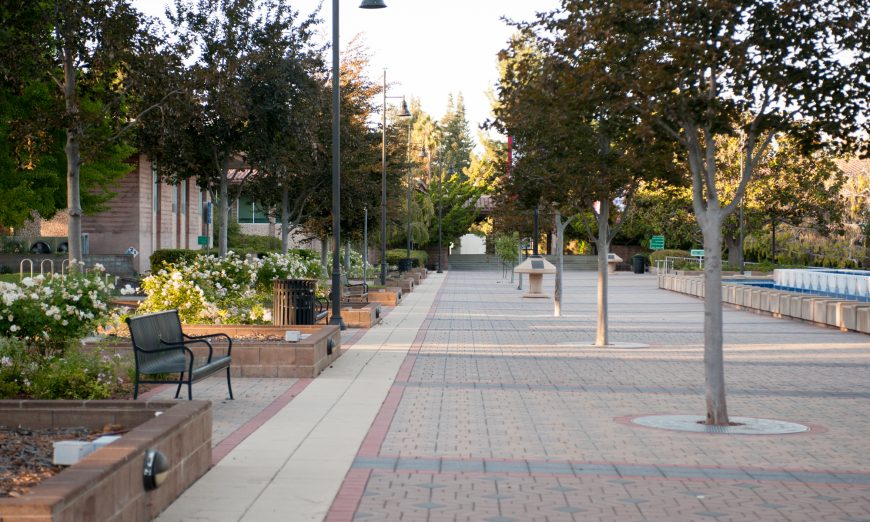With no planning items on the Planning Commission’s schedule, the commissioners used the Feb. 16 meeting to start looking at Santa Clara’s long-term planning goals.
Several commissioners submitted ideas for topics they think the City Council should explore to deal with Santa Clara’s future growth.
If the topics are still a topic of concern at the conclusion of 2022, the Planning Commission will submit them to the Council for consideration during the Council’s 2023 goal-setting session.
Preparing for Increase Strain on City Infrastructure
Commissioner Lance Saleme pointed out that the shift away from natural gas, coupled with the increased use of electric vehicles and the impact of ADUs and SB 9 on single-family properties could put a strain on Santa Clara’s infrastructure, specifically electricity.
Saleme is concerned that while we’re increasing load requirements for new developments, that increase isn’t happening at a steep enough curve.
“If we run out of capacity and need to string lines and do things like that, we’ll be playing catch up when we should have been ahead of the curve,” said Saleme. “We may have capacity and we may even have plans for growth, but I don’t think our sustainability into the next 5 to 10 years is being fully addressed.”
City staff suggested a study session with Silicon Valley Power to get some of Saleme’s concerns addressed.
Creation of Development Standards
Saleme also suggested that a member of the Planning Commission and a member of the City Council begin sitting in on the architectural review process for larger projects. This led to a larger discussion about design standards within the City.
City staff said it’s “difficult” to ask a developer for anything that isn’t “objective” because of housing laws.
“Where I actually see the most value now for what the commission could help us with is the creation of development standards, design standards that can then be applied in a way that’s uniform and could be objective, but there’s a whole lot of work to do on that and there’s actually a cost,” said one City staff member.
Community member Patricia echoed the sentiment, saying it not only frees up staff but also allows for continuity of knowledge as new commissioners join the commission.
Saleme was concerned that with each project being different, it would be difficult to create a single set of standards.
Communication Between Planning Commission and Other Government Bodies
Chair Nancy Biagini wanted to explore how the Planning Commission could communicate with other City commissions such as the Historical Landmarks Commission.
“I just think there should be conversations between commissions where they overlap. That would be something I would like to see happen more,” said Biagini.
Several commissioners agreed. Saleme said it would be nice to know how the Planning Commission could “support” other commissions. While Commissioner Priya Cherukuru thought communication between the City staff, the Historical Landmarks Commission and the Planning Commission could help make sure “all voices are appropriately represented to City Council.”
Dealing with Variance Changes
Commissioner Yashraj Bhatnagar expressed concern about a recent project that received several variances to build senior housing but then returned to the commission to ask that it be allowed to open up the housing to residents of all ages. The Planning Commission rejected the request; however, the City Council approved the request.
Bhatnagar asked that the City develop guidelines so that if a project is “rewarded” for some kind of conditions, Santa Clara would “hold the line” for some set amount of time (i.e., five years) before allowing the applicant to make changes.
Commissioner Qian Huang was worried the City did not have the “right” to make those rules.
“[The] population is growing. We need more development. We need more housing. If you have more restrictions, how can you resolve those problems?” said Huang.
Bhatnagar agreed, but said he did not believe changes should be allowed “willy nilly.”
City staff said under the current code, a timed condition is not possible because policy cannot tie the “council’s future legislative discretion.” However, the Planning Commission does have the power to recommend to the City Council that the zoning ordinance be changed for such conditions.
Return to In-Person Planning Commission Meetings
The Planning Commission also talked about when in-person meetings would resume and if it would be in a hybrid model.
City staff says commissions generally follow suit with the City Council.
Assistant City Attorney Xander Abbe says under the Brown Act, the Planning Commission must meet in person. Because we are in a state of emergency, the City Council has to pass a resolution every 30 days to allow for the remote meetings. When the council stops passing the resolution, then in-person meetings in Santa Clara must resume.
Other Items
Biagini also suggested that the Commission get a better perspective on how to deal with some of the planning challenges in Santa Clara by bringing in speakers from other cities who are dealing with similar issues.
Lesley Xavier was recently promoted to Planning Manager in the City of Santa Clara. She will take on a larger role within the Planning Commission. Reena Brilliot was promoted to Assistant Director of Community Development and will take a lesser role on the Planning Commission.
The next Planning Commission meeting is scheduled for Wednesday, March 9, 2022, at 6 p.m.






